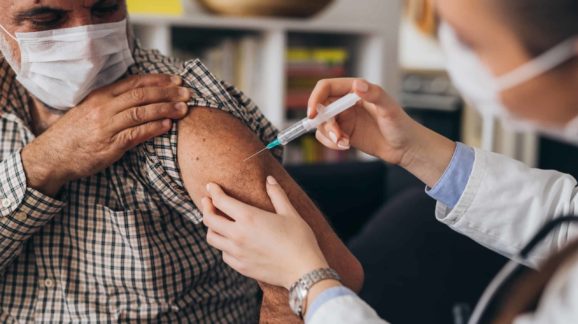The Feds’ Foolish J&J Vax Pause is Already Undermining the War on COVID
A little more than a week ago, federal officials called for a pause in the use of Johnson & Johnson’s COVID-19 vaccine. The decision came after reports of six cases of a blood clot in the veins of the brain, called cerebral venous sinus thrombosis, or CVST. That’s six out of more than 7 million jabs.
It was a big mistake, and new data show why. Since then, we have witnessed an 11 percent drop in the seven-day average of daily vaccines administered. That’s despite the nationwide loosening of vaccine eligibility criteria.
As I predicted in these pages, the pause would undermine already-fragile public confidence in the vaccines. Just before the pause, 52 percent of respondents thought the J&J vaccine was safe, according to an Economist/YouGov poll on vaccine-safety perceptions. That was roughly in line with beliefs about the Pfizer and Moderna vaccines — and twice as high as the 26 percent who believed J&J was unsafe.
After the pause, confidence in the J&J vaccine’s safety plummeted to 37 percent, and worries that it is unsafe rose to 39 percent. Thus far, confidence in the Pfizer and Moderna shots has held. But for how long remains a question.
More than a third of Americans remain vaccine-hesitant: that is, they tell pollsters that they will either definitely refuse the jabs, accept them only if required or wait and see how others do with vaccination. Among these groups, the top concern is serious side effects.
In monthly surveys between December 2020 and March 2021, the number of people who wanted to wait and see how others react to vaccination declined from 39 to 17 percent. In the wake of the J&J vaccine pause, no one should be surprised to see the percentage rise in the April survey, as yet unreleased.
The J&J vaccine is particularly important for protecting the homebound, the elderly and rural residents from contracting and dying from COVID-19. The other two vaccines authorized for use in the United States — Pfizer and Moderna — require freezers for transportation and storage and two shots. The J&J vaccine only needs regular refrigeration and a single shot, making it much easier to use for these hard-to-reach populations.
Without J&J, they might go unvaccinated altogether.
These populations also face far more risk of blood clots from contracting COVID-19 than they do from the J&J vaccine. A study from the University of Oxford found that the likelihood of CVST in the two weeks after being diagnosed with COVID-19 was 100 times the risk in the general population without the disease and about eight times the incidence following the AstraZeneca COVID-19 vaccine that uses a similar adenovirus platform as the J&J vaccine.
Put another way: Your risk of getting those CVST blood clots is much higher without the J&J vaccine.
Read the full article at New York Post.
